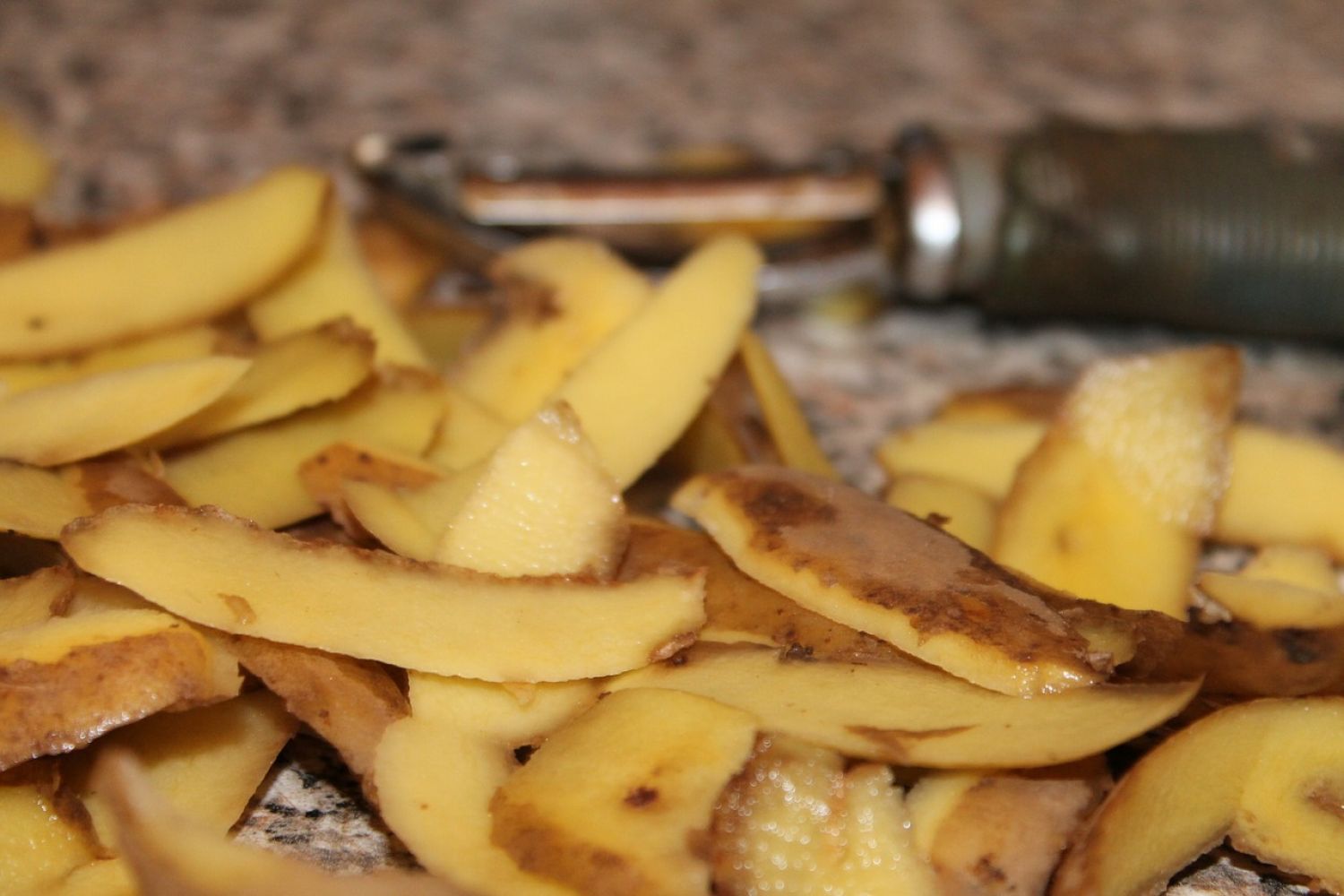Want to make your own Bokashi and get started right away?
We’ve put together some helpful tips for you on how to make bokashi:
“Make your own Bokashi" directly in the set at MikroVeda. We deliberately include only the most proven containers in our assortment.
It makes perfect sense to manage with two Bokashi buckets. When one bucket is full and ferments for about 14 days, depending on the storage temperature, the other bucket can be refilled.
Recommended organic waste for high quality Bokashi: “Bokashi" means “all kinds of things" and all kinds of things are allowed in the Bokashi bucket, but it must be organic waste, such as: Vegetable and fruit scraps, potato peels, bread scraps, coffee grounds, tea leaves or flower scraps.
What is NOT allowed in the Bokashi bucket:
rather no cooked food,
no liquids, such as wine, juice, milk, oil, also no water,
no animal waste such as meat, fish, eggs, cheese, yogurt, bones, hair, wool, feces,
no paper and no ashes.
Sand bag as a lid in the bucket: to represent the immediate air seal in the bucket, a foil bag filled with sand can be placed on top of the organic waste. Spread the sand toward the edge so that the bag seals well all around. The “sand bag lid" is then placed evenly and airtight after each filling.
The soil can be provided with sufficient nutrients by Bokashi, which covers the nutrient requirements on the vegetable and potato beds for the first two to three weeks. After that, a further Bokashi application and a weekly care of the crops with MikroVeda Terra to overwater the plants and the soil is recommended. Basically, you can start with Bokashi applications at any time during the summer half-year.
Many animals love Bokashi. Foxes, martens and dogs, for example, track down the Bokashi if it is not completely covered with soil. It is dug up and readily eaten. For this reason, bokashi should always be well incorporated into the topsoil if poorly experienced, and in some areas may even be covered with a fleece.
The amounts of further Bokashi applications during the summer will be determined by the requirements of a succession crop: Low-yielding vegetables (e.g., leaf lettuce except New Zealand spinach, which is considered a high-yielding vegetable, bush beans, herbs, cress, carrots, purslane, radishes, and turnips) generally have enough supply left. Medium-demanding vegetables (e.g., Chinese cabbage, broad bean, leeks, chard, parsnip) and high-demanding plants (e.g., cucumbers, potatoes, cabbage, melon, New Zealand spinach, peppers, rhubarb, beets, celery, tomatoes, zucchini) need replenishment. For existing plantings, the following applies: because fresh Bokashi is acidic and plant roots could be “burned" by it, it should only be applied at a certain distance from the roots and thoroughly mixed with the soil of the planting hole. Therefore, for plants that are already established, whether vegetables, potatoes or woody plants, make a 15 to 20 centimeter deep and equally wide trench or ring (around the so-called tree disc) 20 to 30 centimeters from the root system. Fill the bokashi about five centimeters high, cover with soil. The roots get signals that good feeders are nearby and grow purposefully toward them, because plants are also constantly looking for food. By the time the plant roots reach the Bokashi, it is already neutralized and well tolerated by them. This application is also suitable if soil preparation with Bokashi was not possible before planting. The procedure is similar for potatoes. The Bokashi is applied to the inter-rows before earthing up. After mounding, it is then accessible to the plant roots.
For the ecological fertilization of trees: Dig two holes up to two spades deep outside the crown diameter for small trees (several holes for large trees; a good aid is a so-called soil auger; but caution is advised here so that the roots, especially the valuable fine or hairy root networks, are not permanently destroyed). The excavated soil is mixed with Bokashi and filled into the hole. Then water abundantly with the ready-made solution MikroVeda Terra and water (mix one liter with 50 liters of water and let it seep in). The roots strive towards this nutrient supply and slowly get the substances they need at the moment. In this way, Bokashi can be given in the eaves even of stressed or already diseased trees. The soil is very quickly revitalized with MikroVeda microorganisms and the tree is enormously vitalized.
Diseased trees suffer not only from a lack of nutrients but also from a lack of water, because their supply channels are severely impaired. Therefore, it is absolutely advisable to water the diseased tree thoroughly beforehand. To ensure that the coveted moisture is retained for as long as possible and is thus available to the tree for as long as possible, it is advisable to add bentonite to the Bokashi.
Bentonite flour is a mixture of various clay minerals derived from decomposed volcanic ash. It has a strong water absorption and swelling capacity.
Large bokashi in the garbage can: In garden maintenance, there are often larger waste masses to deal with. In the summer it is the lawn cuttings, in the fall large amounts of vegetable waste accumulate during harvesting. In winter, shrub and tree cuttings are added to the mix. Due to the larger amounts of organic waste in the garden, the production of Bokashi in simple garbage cans is suitable. In principle, it is the same process as the fermentation of kitchen waste, but on a larger scale. A barrel (e.g. from the hardware store or garden center) is lined with a plastic bag; into this are placed the household and garden waste to be fermented (farmers better take, for example, grain cleaning waste,
spoiled hay and/or straw, etc.) and either the MikroVeda Stock Solution Superactivated and/or the MikroVeda Garden Bokashi Ferment, dry as fermentation starter. For example, for a 200 liter garbage can, you will need at least a good 30 heaping tablespoons of the MikroVeda Garden Bokashi dry as a starter. So much of the MikroVeda Stock Solution Superactivated is used that the waste layer is well moistened. Each layer must be well pressed and moistened by hand. When the mixture is pressed together in the hand, the pressed lump of waste must not fall apart; however, no liquid should formally seep out. A lower corner of the bag is cut open with scissors so that the liquid produced during fermentation can drain off and be collected via a drainage tap, which should be located on the garbage can. By the way, this liquid, in addition to the fermented material, you can later put on the ground or mix into the watering water. Afterwards, the well-tied plastic bag (airtight) must be weighted down with as heavy an object as possible.
Literature tips:
Higa, T.: New life from fermented kitchen waste – High-quality Bokashi compost through Effective Microorganisms ISBN 978-3- 922201-63-2;
Lorch, A.: A Chance for our Earth – Effective Microorganisms, Mode of Action and Practice. ISBN 978-3- 033-02354-3


